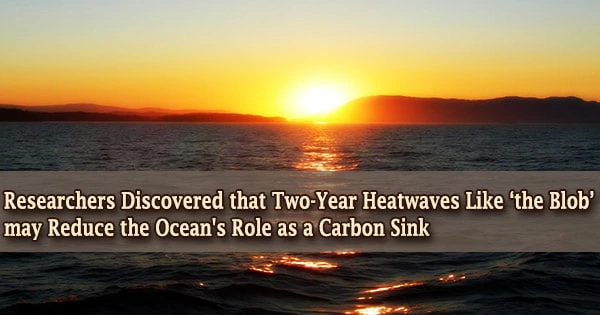The two-year heatwave known as ‘the Blob,’ according to researchers, may have temporarily slowed the Pacific’s ‘biological pump,’ which transports carbon from the surface to the deep water, where it may be stored for millennia.
A large-scale investigation of the impact of one of the greatest marine heatwaves on record, commonly known as the Blob, on Pacific Ocean microorganisms, was done by Canadian and European researchers in partnership with the US Department of Energy Joint Genome Institute. Their findings imply that sudden changes in water temperature influence more than only bigger marine creatures.
“Heatwaves such as the Blob may decrease the ocean’s biological role as a carbon sink for fixed atmospheric carbon,” said Dr. Steven Hallam (he/him), a microbiologist at the University of British Columbia and author of the paper published in Nature Communications Biology.
The ocean is a huge global reservoir for atmospheric carbon dioxide. If marine heatwaves reduce the capacity for carbon dioxide to be absorbed into the ocean, then this shrinks this reservoir and leaves more of this greenhouse gas in the atmosphere.
Dr. Colleen Kellogg
According to co-author Dr. Colleen Kellogg (she/her), a research scientist at the Hakai Institute, this ‘biological pump’ process is a crucial mechanism for buffering the influence of human activities on Earth’s climate. “The ocean is a huge global reservoir for atmospheric carbon dioxide. If marine heatwaves reduce the capacity for carbon dioxide to be absorbed into the ocean, then this shrinks this reservoir and leaves more of this greenhouse gas in the atmosphere.”

Microbes form the base of the marine food web, performing critical functions such as synthesizing and recycling organic matter. Very little is known about how these invisible community members are affected by marine heatwaves, but understanding their responses can provide a vital sign for the rest of the marine food web.
“Marine heatwaves are one of the big challenges of climate change,” explains Dr. Sachia Traving (she/her), lead author on the study at the University of Southern Denmark. “Understanding how heatwaves affect microorganisms, some of the tiniest but most common species on the planet, will aid our understanding of how future ocean life will be affected.”
The project brought together experts from UBC, Fisheries and Oceans Canada’s Institute of Ocean Sciences, and the Hakai Institute to analyze these reactions. They used seven years of DNA sequencing and oceanographic data from Ocean Station Papa (OSP), an open-sea buoy, to map how microbial communities were formed before and after the most severe marine heatwave in recent memory.
The Line P transect’s terminus station is OSP. Line P is one of the world’s longest-running oceanographic time series, with 26 hydrographic stations commencing in British Columbia’s coastal waters and going westward to OSP, almost 1,400 kilometers from the coast, since 1956.
During the Blob, which began in 2013, researchers saw an increase in bacteria that were suited to thrive in nutrient-limited environments. That shift was most likely caused by changes in the phytoplankton in the area, which experienced a decrease in bigger cells that contribute to the creation of organic matter particles. As a result of the decrease in big particles, the ocean’s biological pump and capacity to operate as a carbon sink are hampered.
As a result of climate change, global temperatures, as well as the frequency and intensity of heatwaves, will climb in the twenty-first century. High air temperatures can have a negative impact on human health and result in more fatalities. Heatwaves may have an immediate impact on huge populations for short periods of time, causing public health problems, excess mortality, and cascading socioeconomic consequences (e.g. lost work capacity and labor productivity).
Marine heatwaves are a direct result of climate change, according to research. As global temperatures rise, these very warm water bodies are becoming more common, disrupting the ecosystems in which they arise.
Previous research on the Blob has shown that it has a wide range of effects on life in the Northeastern Pacific Ocean, including phytoplankton, zooplankton, and fish populations, as well as marine animals and birds.
The latest study extends these effects to the microbial food webs that underpin carbon transport and sequestration in the ocean, highlighting the importance of continuing time series data in order to better forecast the effects of climate change on critical ecosystem processes and services.





